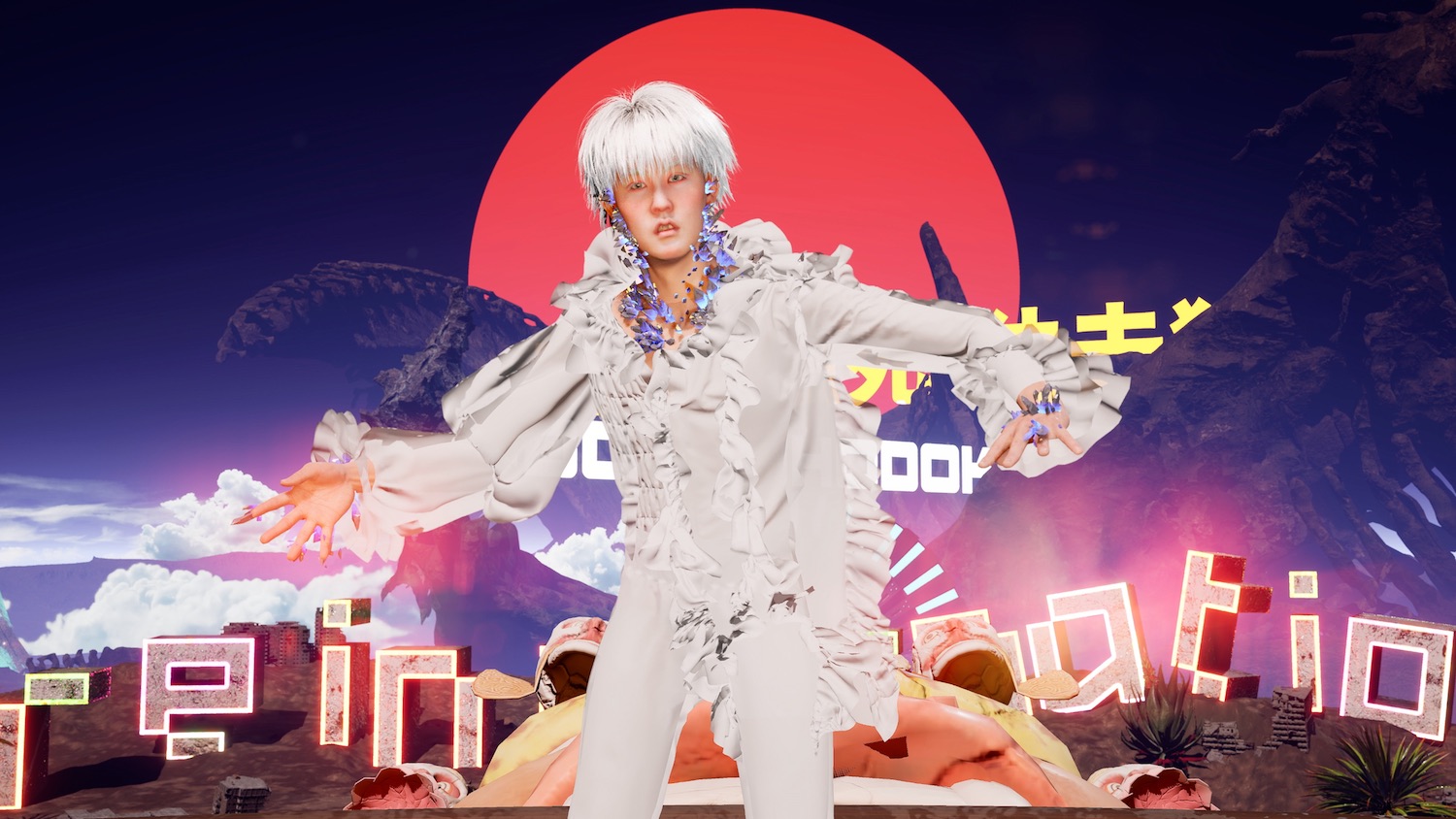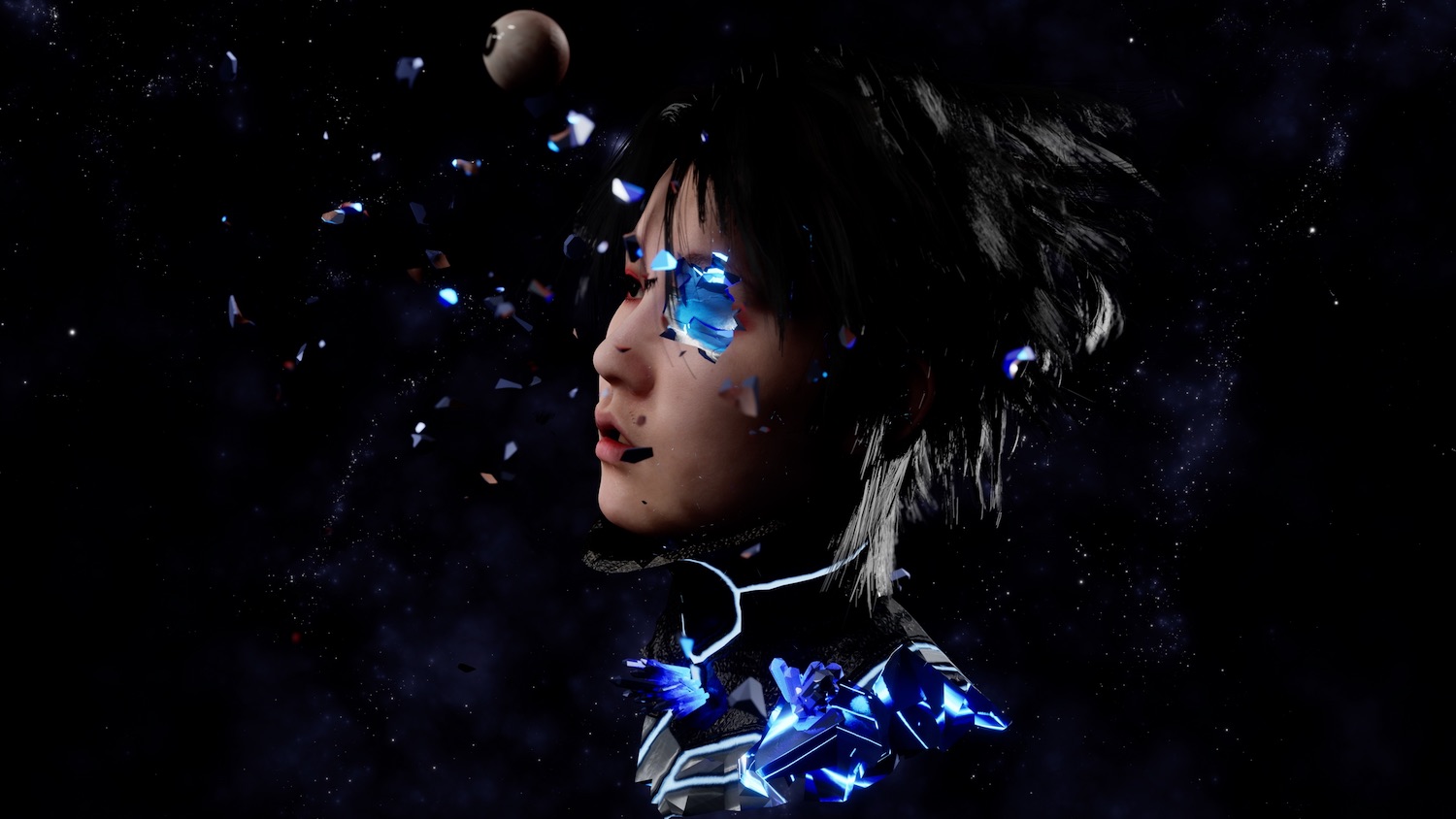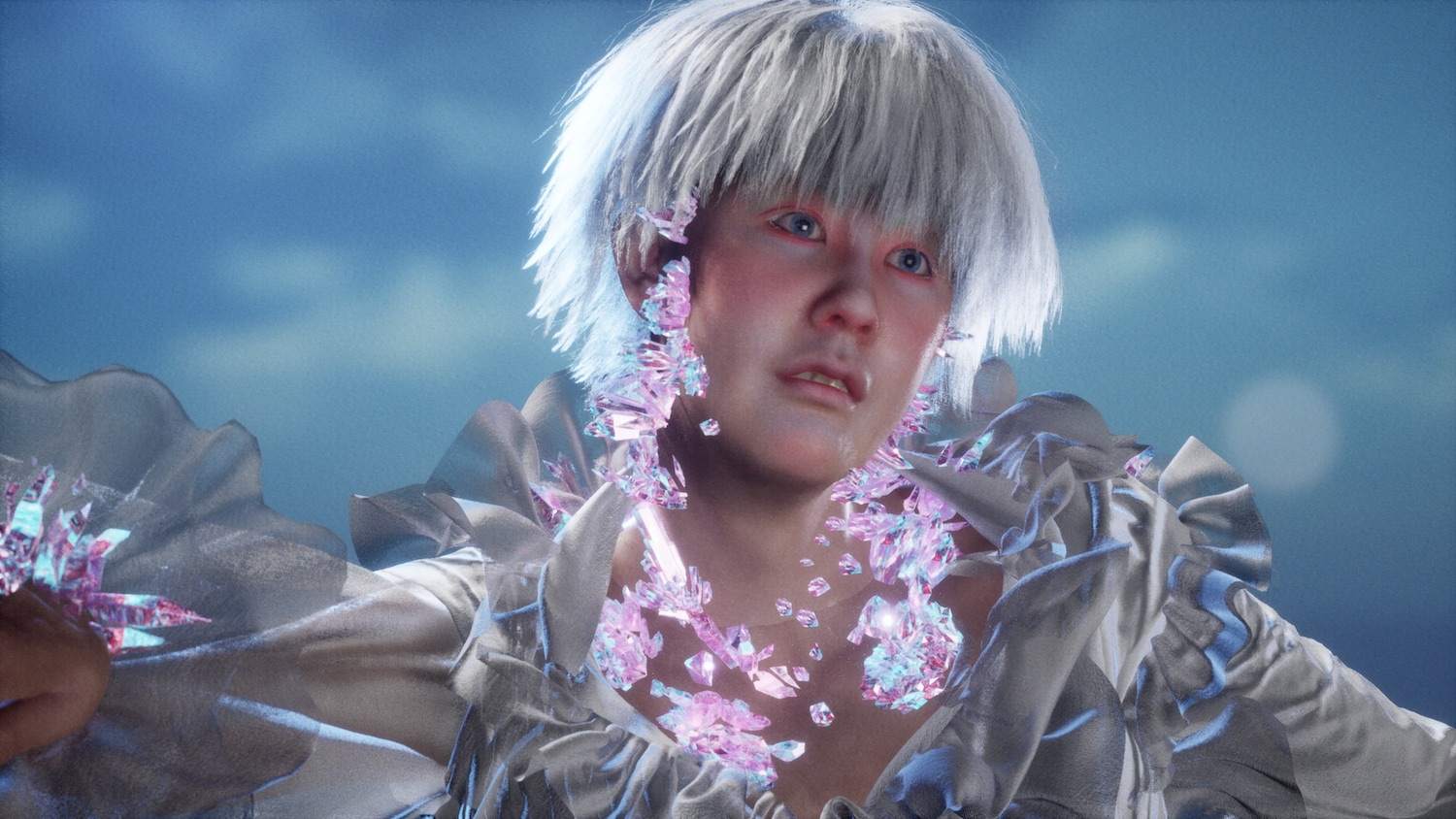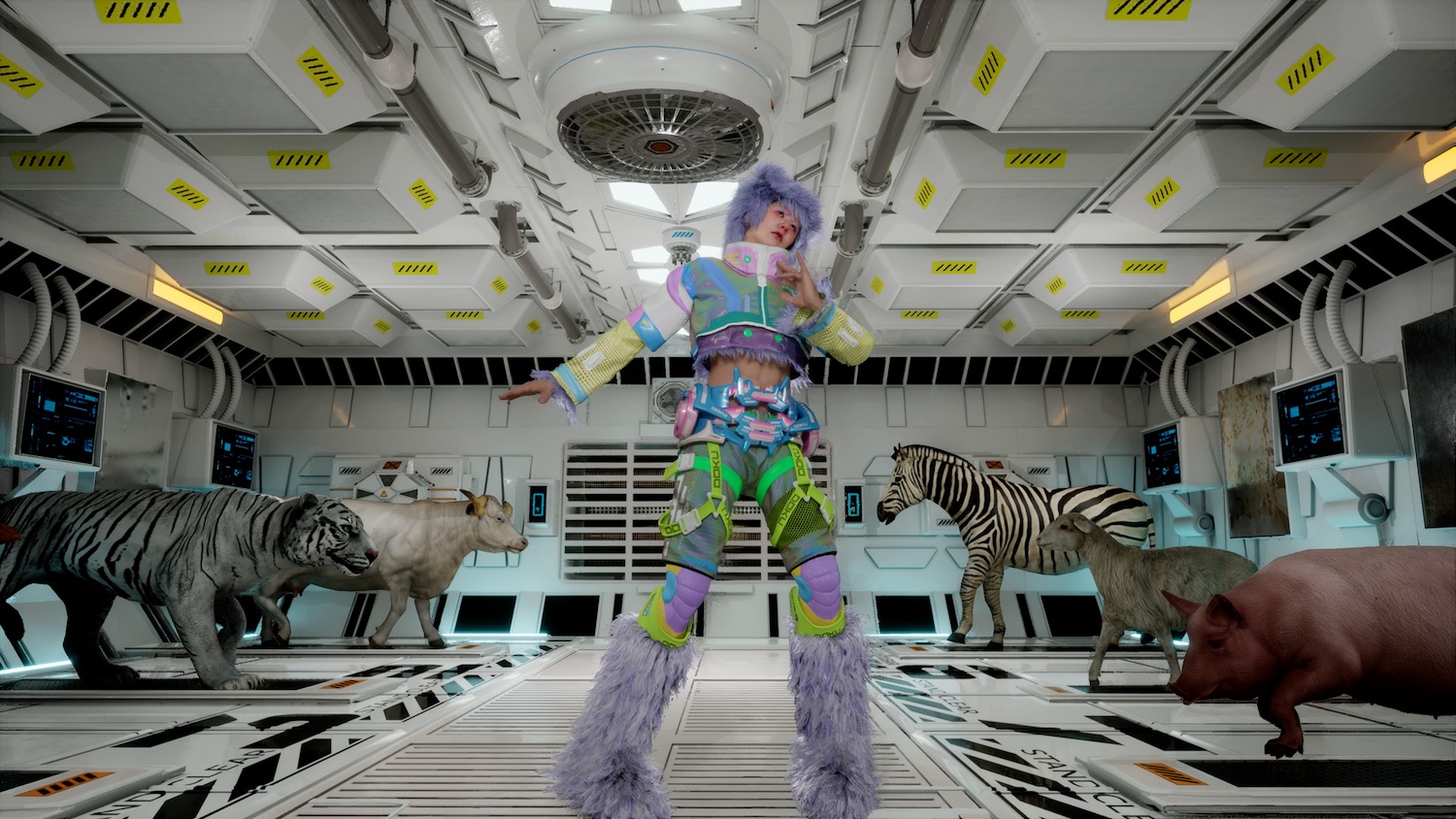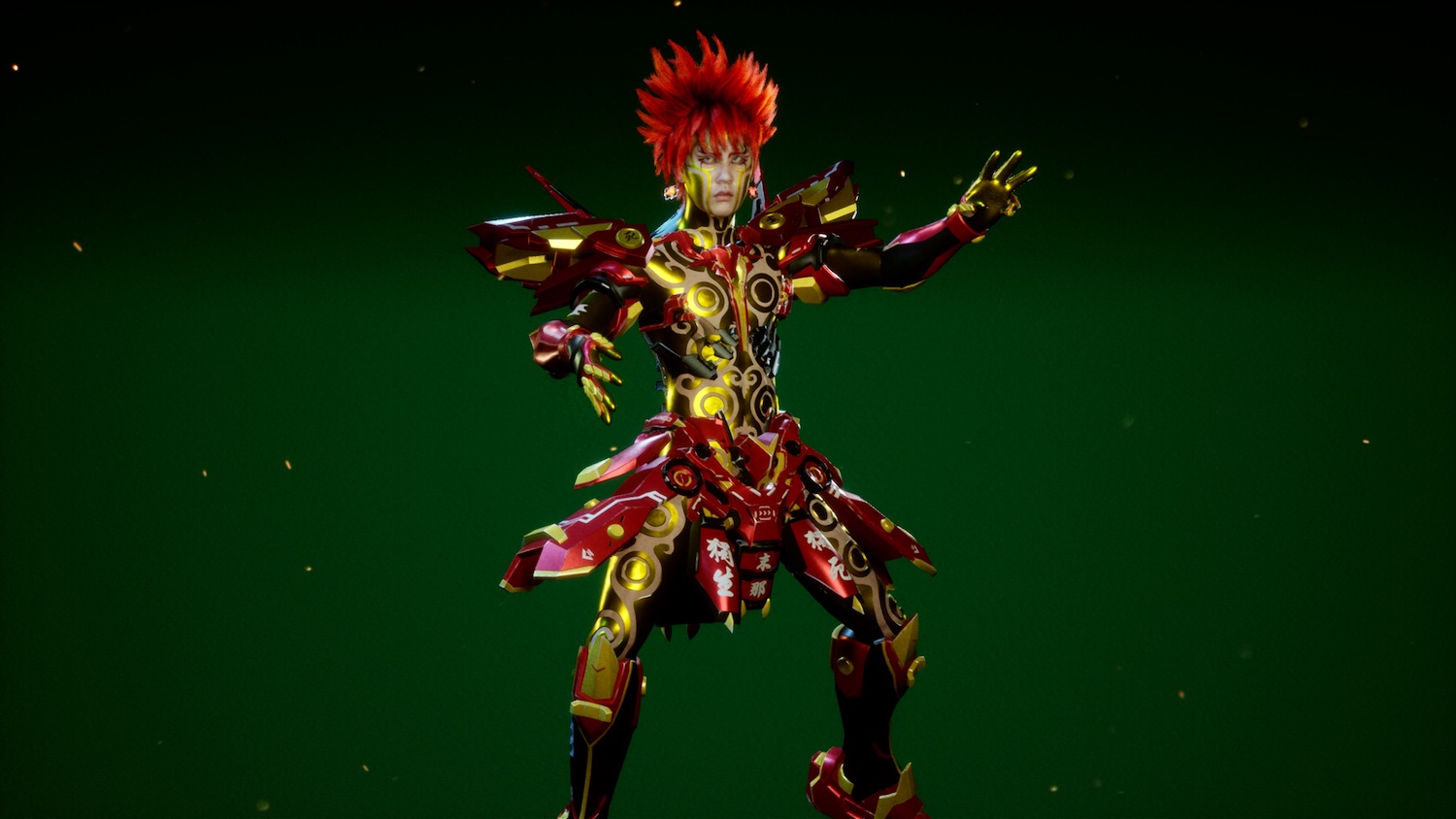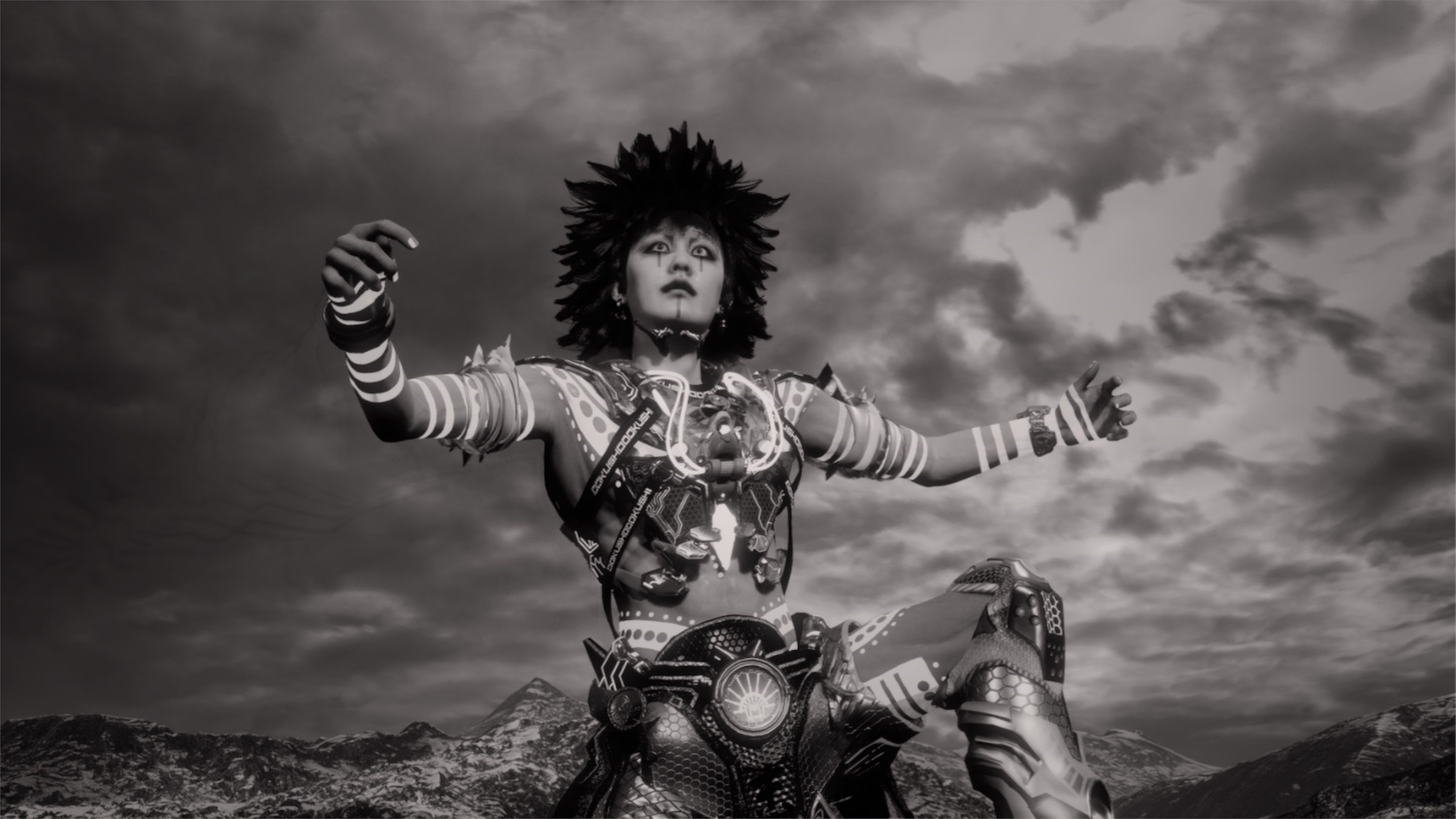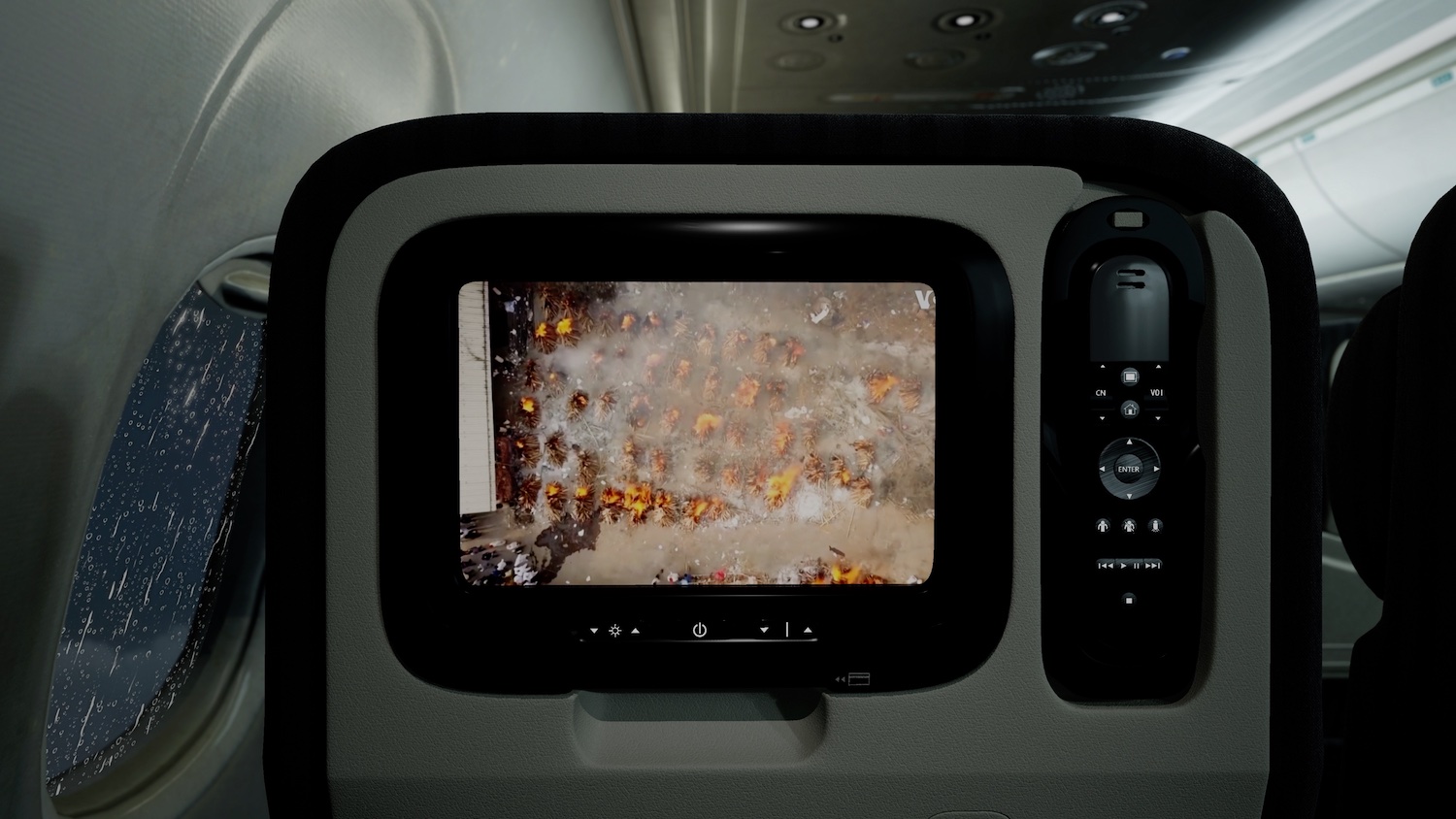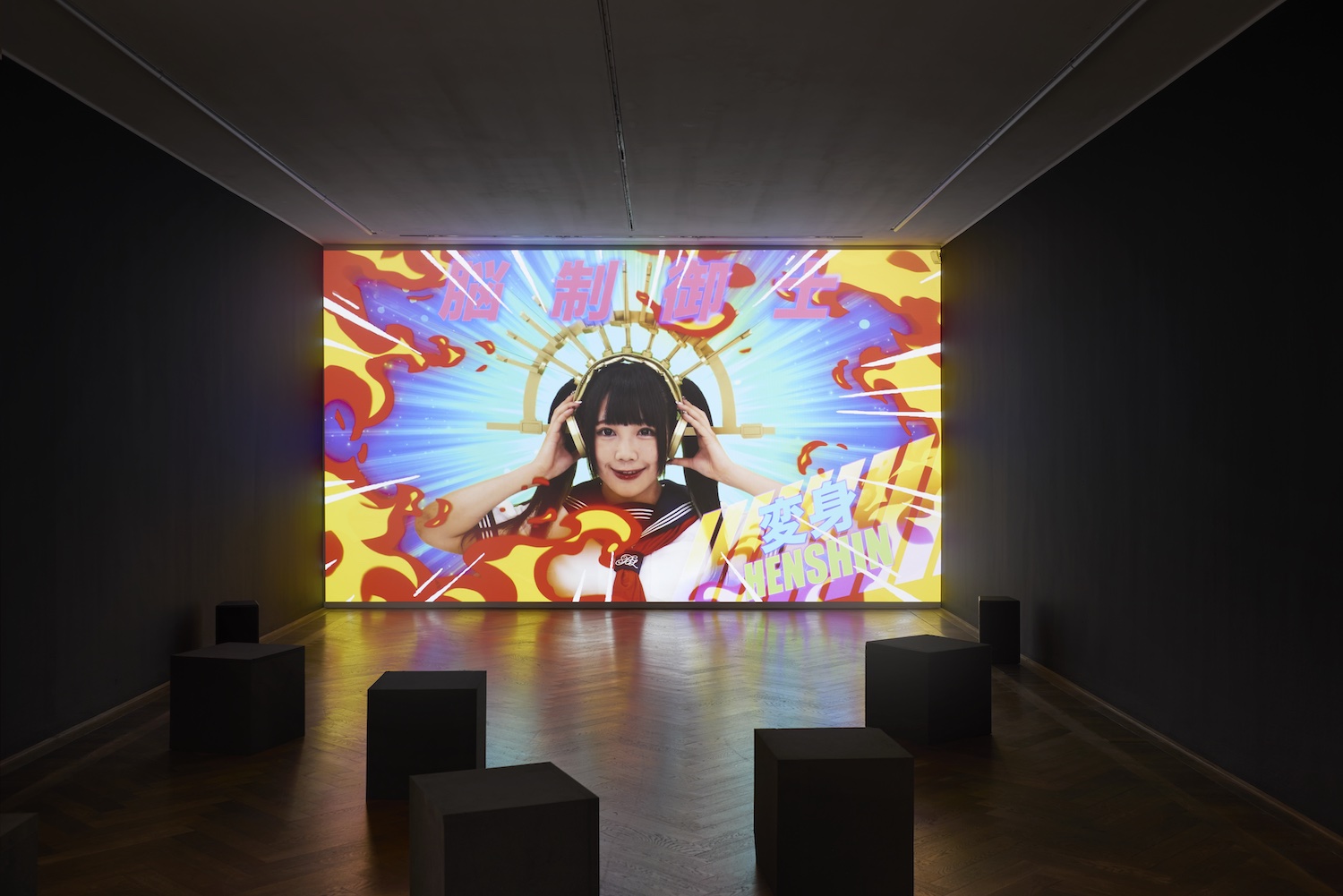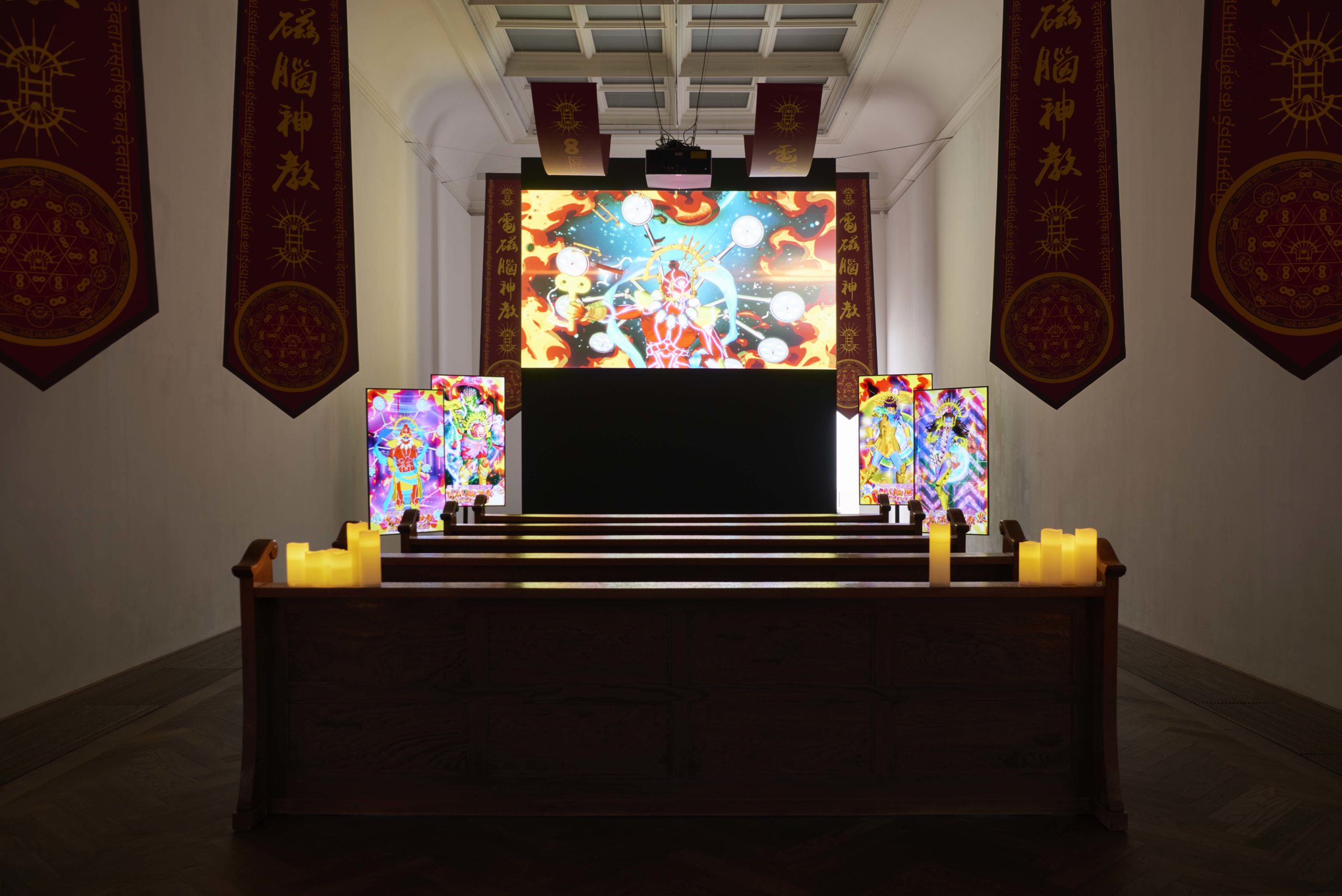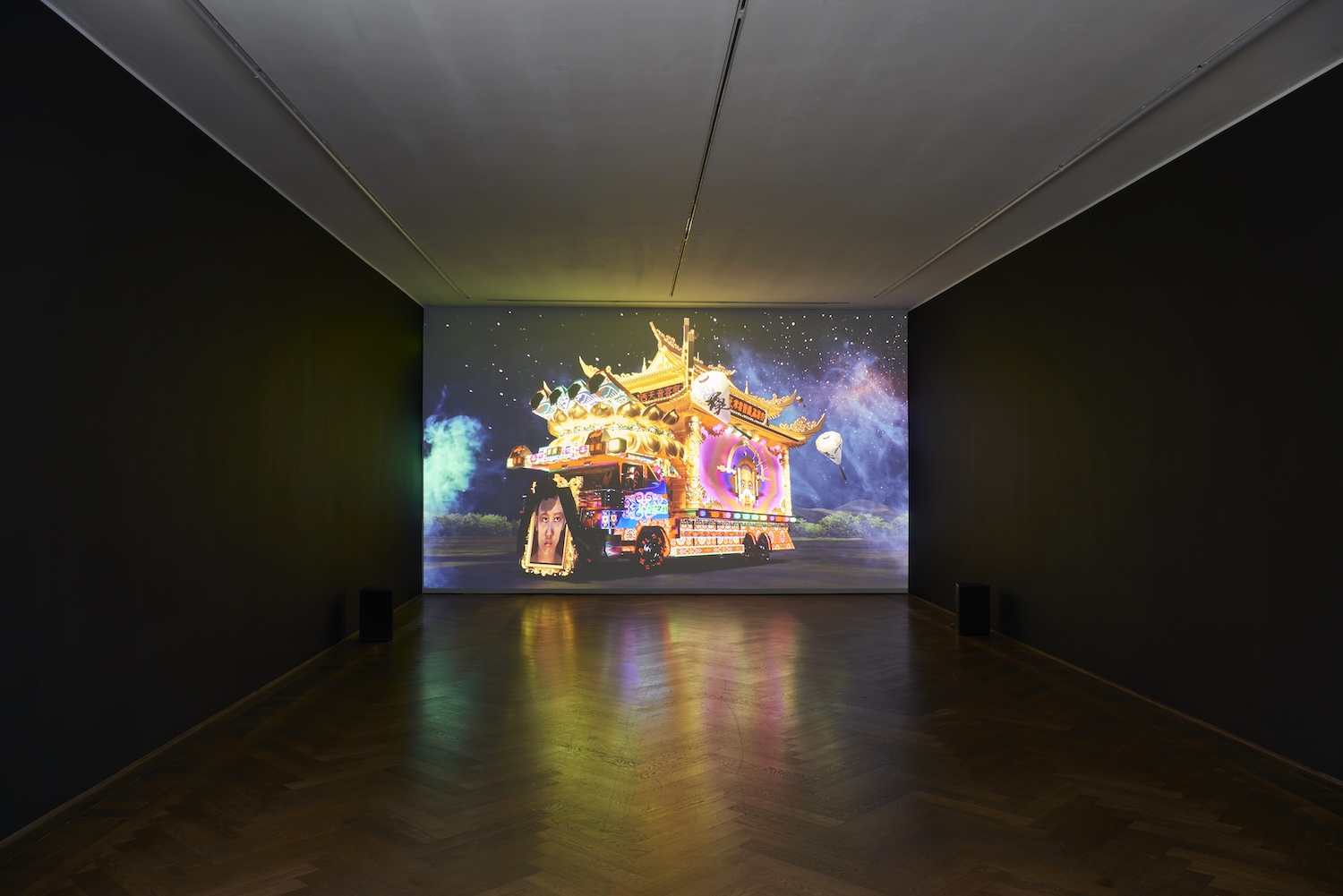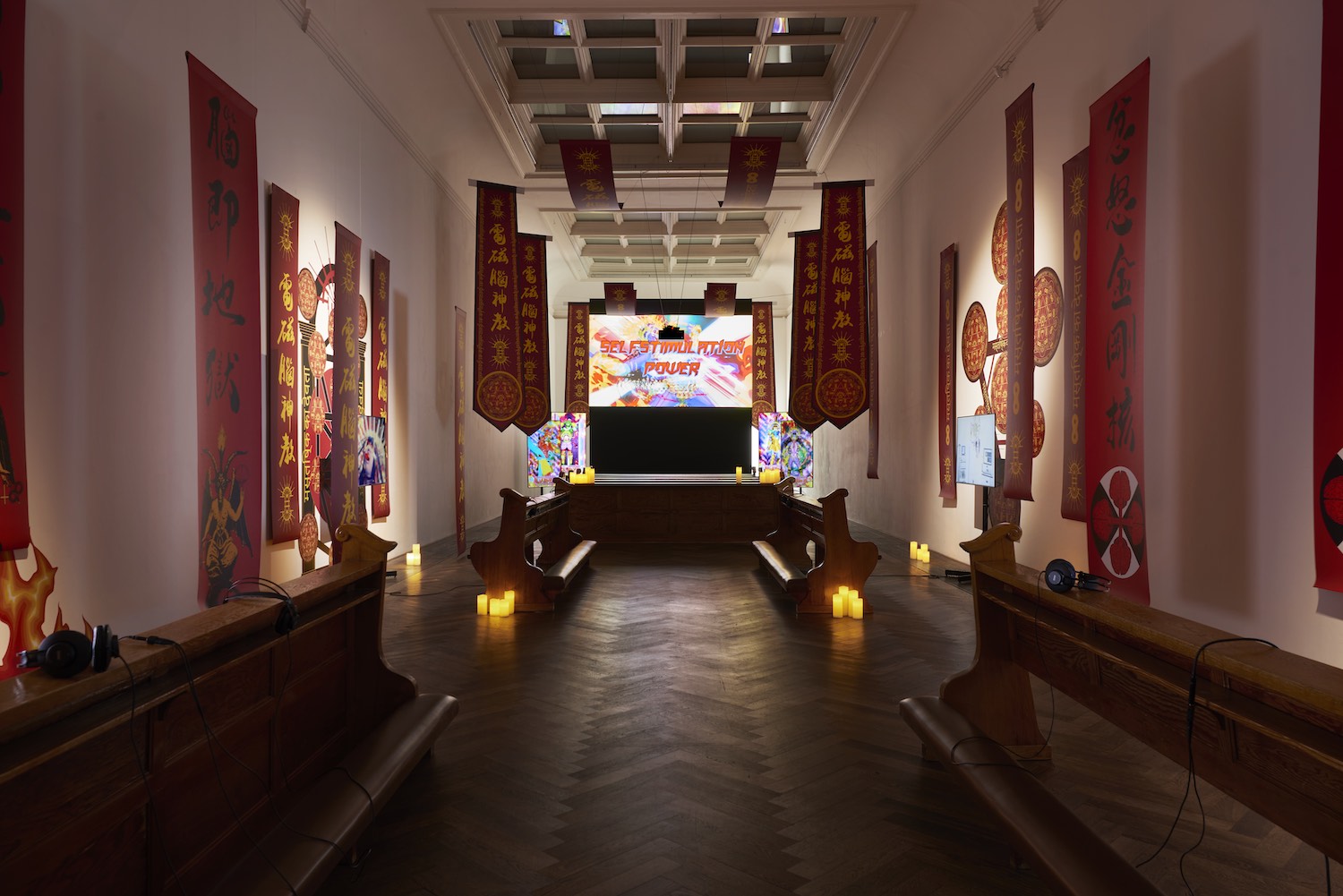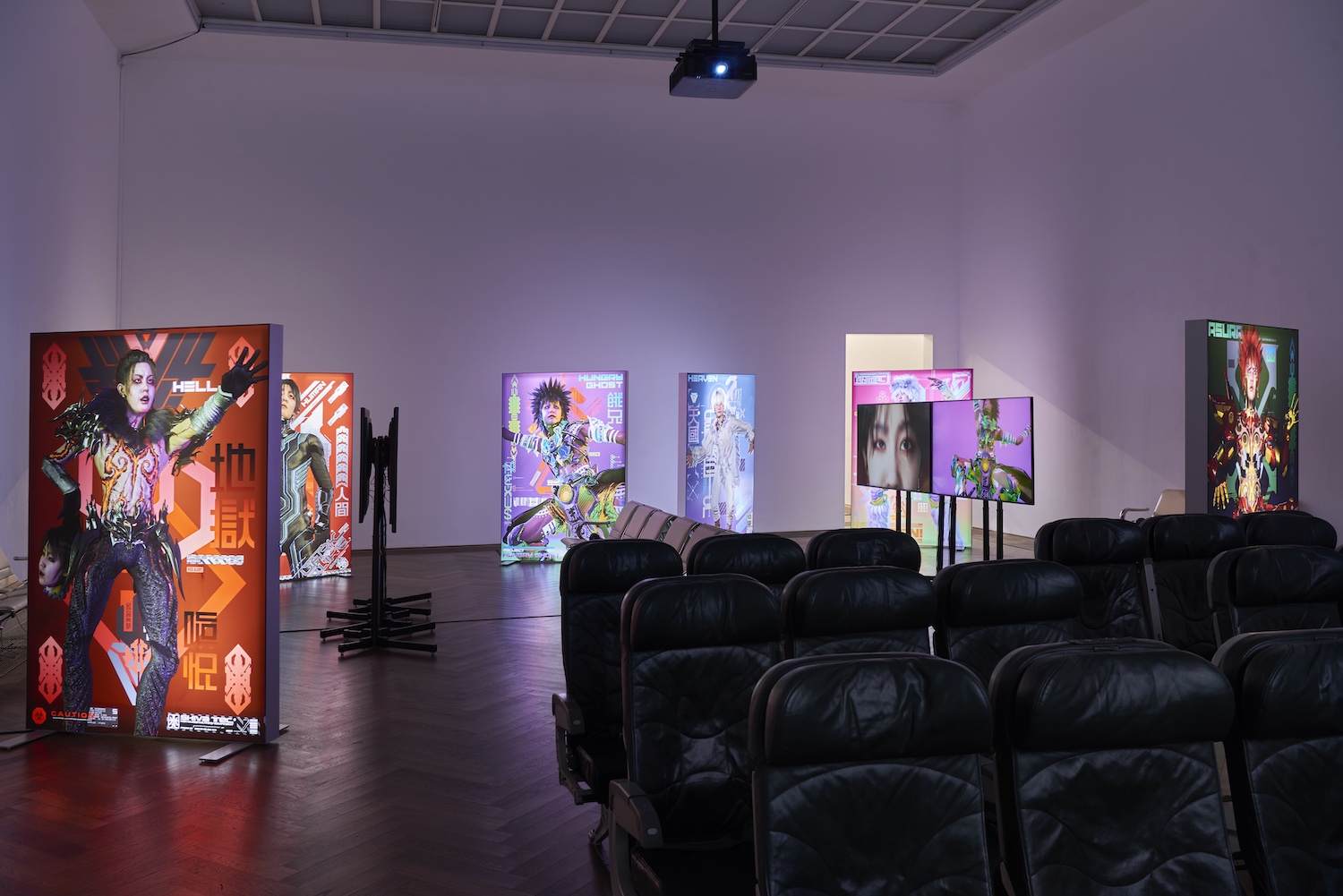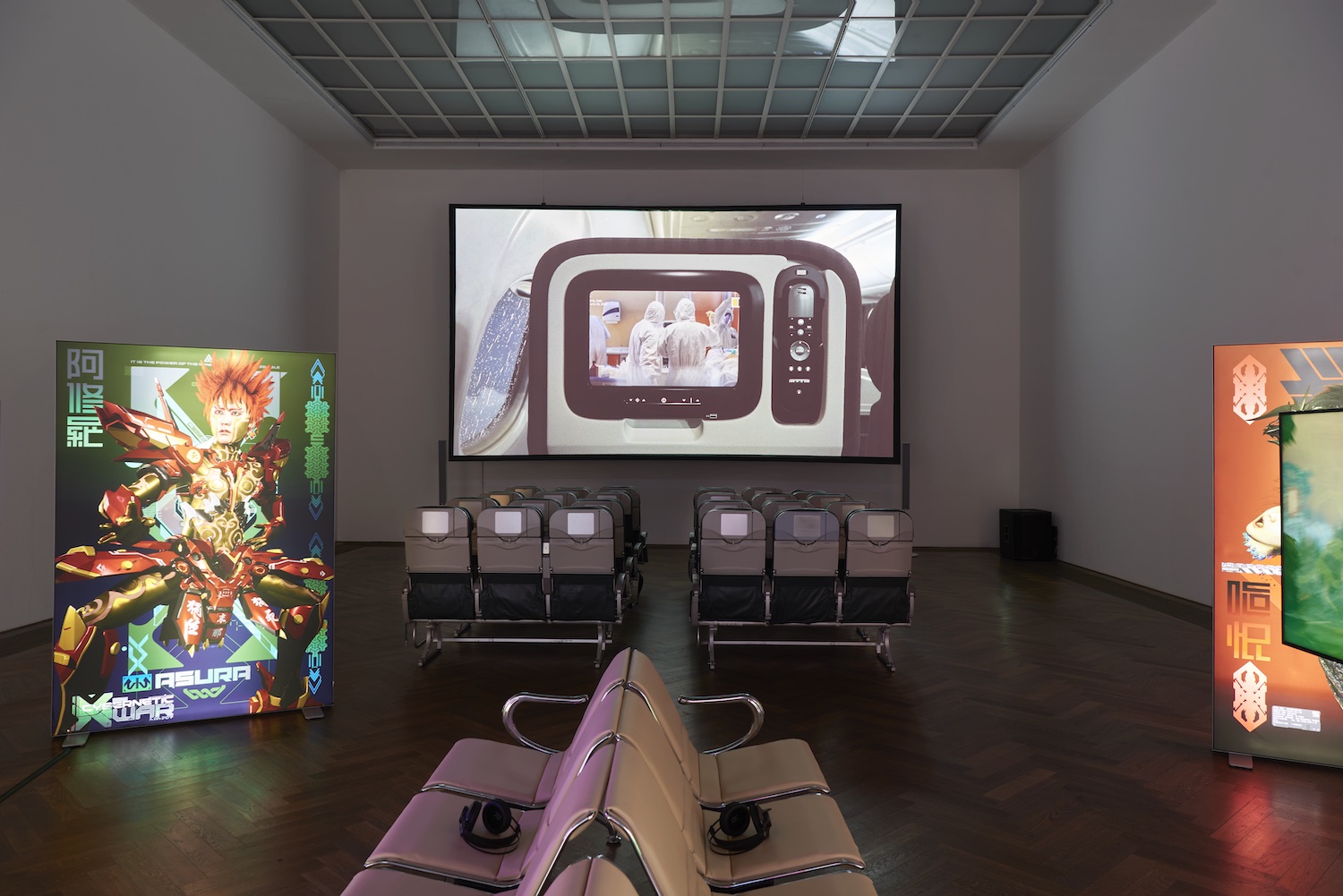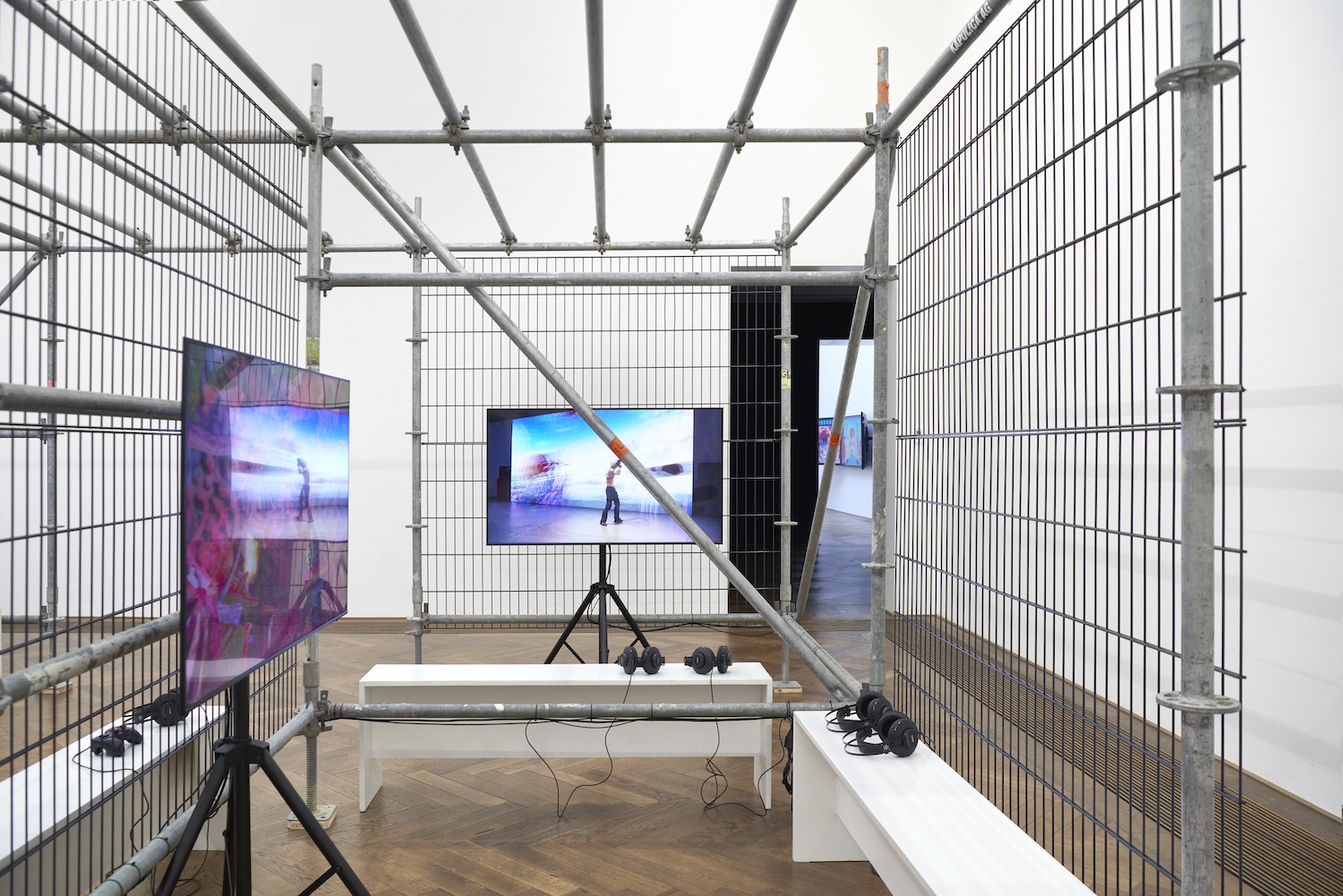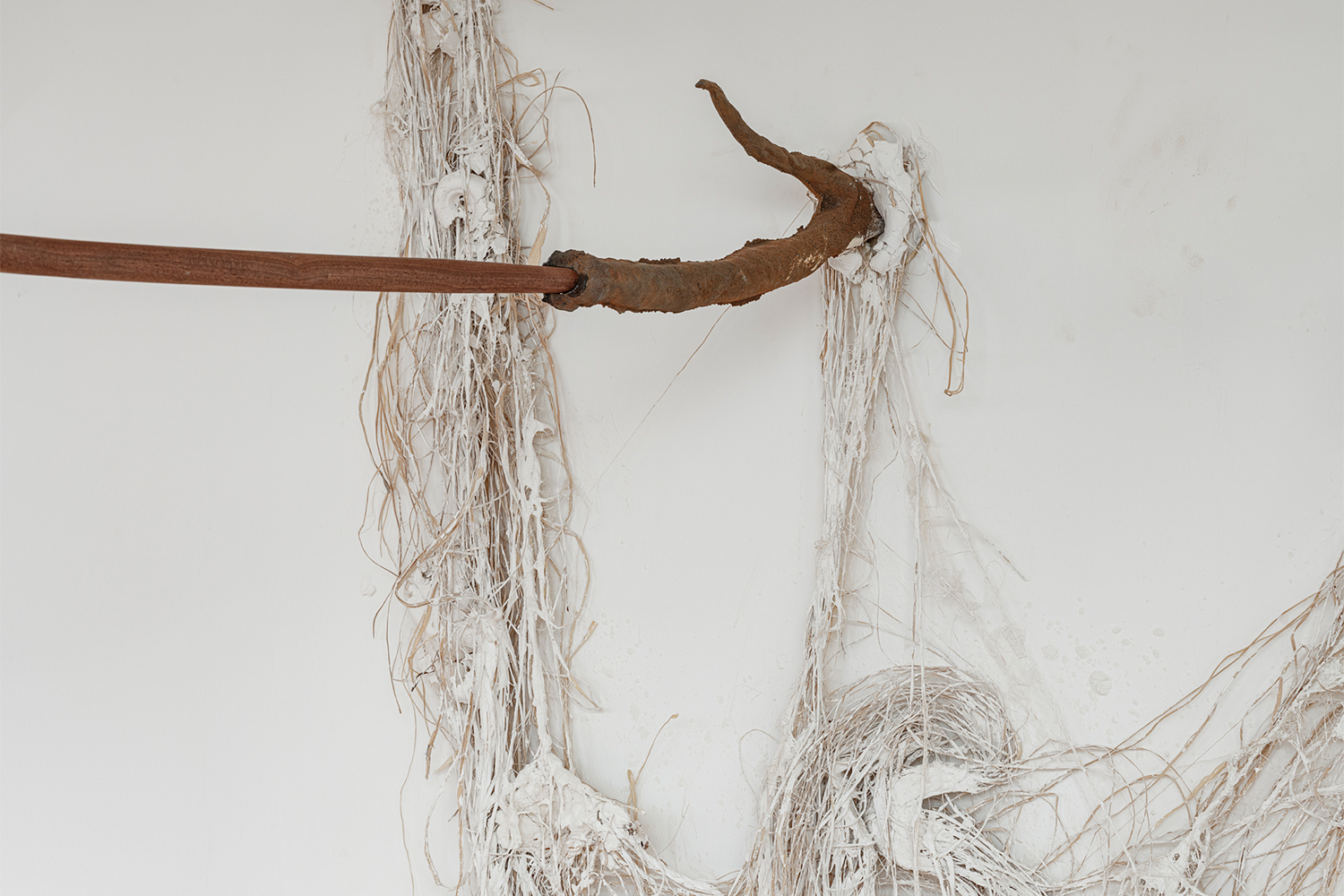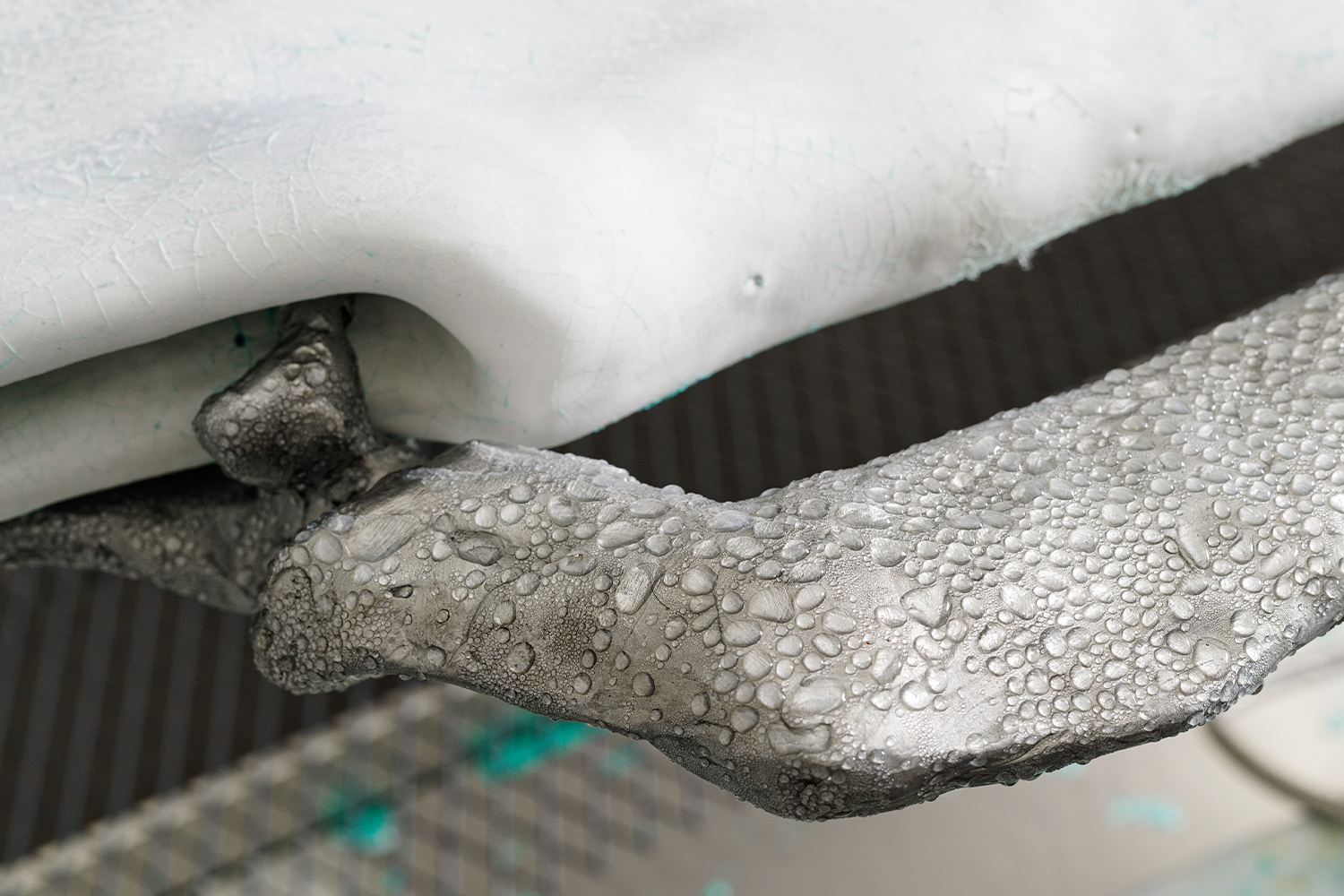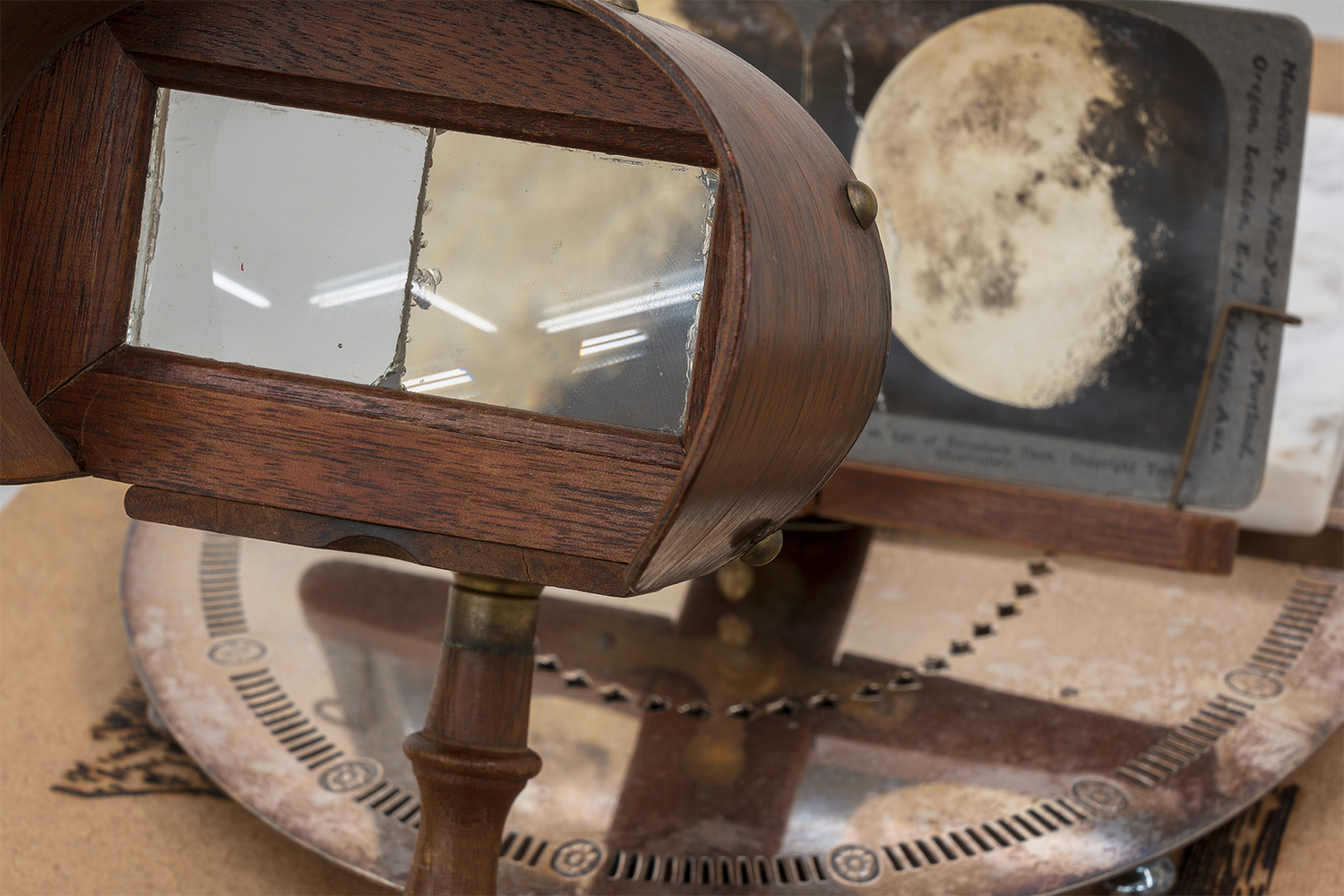“What am I? Which part of this body is me?” asks an animated figure in The Great Adventure of Material World – Game Film (2020), one of LuYang’s video works currently on view in the artist’s solo exhibition at Kunsthalle Basel. Such neurotic questions about bodily disintegration abound in the exhibition, perhaps triggered by the specific form of technological anxiety associated with the knowledge, or rather the affective awareness, that the human body is constantly entangled in a sea of different technologies, prostheses, and cognitions, its demarcations increasingly difficult to circumscribe. But in LuYang’s universe, this departure from non-technological “purity” — which arguably never existed — is also conducive to pleasure. In his1 videos, characters constantly morph, transform, and shift, with the virtual providing an outlet for ongoing physical experimentation. LuYang, who was born in Shanghai and now lives in Tokyo, uses a variety of cultural references such as anime, Buddhism, and video games (interactive gaming stations are also in the exhibition) to create installations, paintings, and performative artworks. The works on display in Basel show LuYang transforming into manga- inspired characters, spiritual beings, and futuristic dystopian robots that address age-old metaphysical themes such as life, death, transcendence, altered states of consciousness, and reincarnation.2 There is no such thing as oversaturation, and the worn-out cliché that everything is connected here takes on another dimension.
But even though the digital offers seemingly infinite possibilities to the physical body, LuYang’s subjects remain firmly grounded in history, the social, the religious, the spiritual, and the political; they are never disembodied. When asked about using the digital to explore Buddhist ideas, the artist replied: “In Buddhism, there’s the idea that nothing is real, whether it’s in the digital or physical world. You can’t touch it; it’s like a bubble or a dream. Based on this concept, I don’t think digital worlds are fake. They’re real.”3 Thus, if the cyber- utopia of the 1990s neatly distinguished between the “real, material world” and the virtual sphere, for LuYang, digital words are not just a reflection of everyday life but an integral part of it. The artist therefore rejects the fallacy of “digital dualism,” or the notion that life online is less authentic than life offline, but considers the very real potential that digital tools have opened up for the manipulation of subjectivity.
In the first room of the exhibition, the space has an appearance of a dimly lit temple, complete with flags and banners reminiscent of a religious festival. The room is divided into four sections, each containing an altar that serves as a viewing station for a different artwork. These were created by the artist in the years immediately following his graduation from art school and bear quirky titles such as LuYang Delusional Crime and Punishment (2016) and TMS (Transcranial Magnetic Stimulation) Exorcism, 2017. By presenting the works in a temple-like setting, the exhibition invites the viewer to participate in a kind of ritual and engage in a way that is both contemplative and celebratory.
Light boxes in the last room, reminiscent of advertising screens found in airports, present the six digital avatars called DOKU. They suggest a reincarnation of the artist in the form of six virtual stand-ins inspired by Buddhist and Hindu cosmologies: DOKU Animal, DOKU Asura, DOKU Heaven, DOKU Hungry Ghost, and so on. In the same room is the most impressive work in the exhibition, DOKU the Self (2022), a thirty-three-minute film that merges ancient dance traditions and digital technology. LuYang’s inspiration for the films came from his travels to Bali, Indonesia, and Kerala, India, where he studied the Balinese Legong and Indian Kathakali dance styles, known for their precise, symmetrical movements, which give the dancers a robotic appearance. He was particularly interested in how these ancient dance traditions embody the human desire to escape mortality — an attempt often associated with science and technology (especially its perverse transhumanist offshoots).
LuYang’s exhibition at Kunsthalle Basel is a thought-provoking exploration of the relationship between mind, technology, and spirituality and a testament to the artist’s idiosyncratic vision and interdisciplinary approach. The exhibition reminds us that art and technology are, despite major divergences, structurally analogous: the creation of new concepts, cosmologies, and ways of communication. Of course, technoscience often tries to forget its own investments in spirituality, creativity, and the libidinal, but these are nonetheless integral parts.

